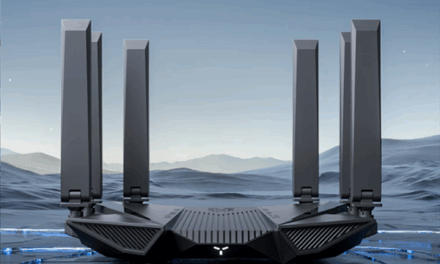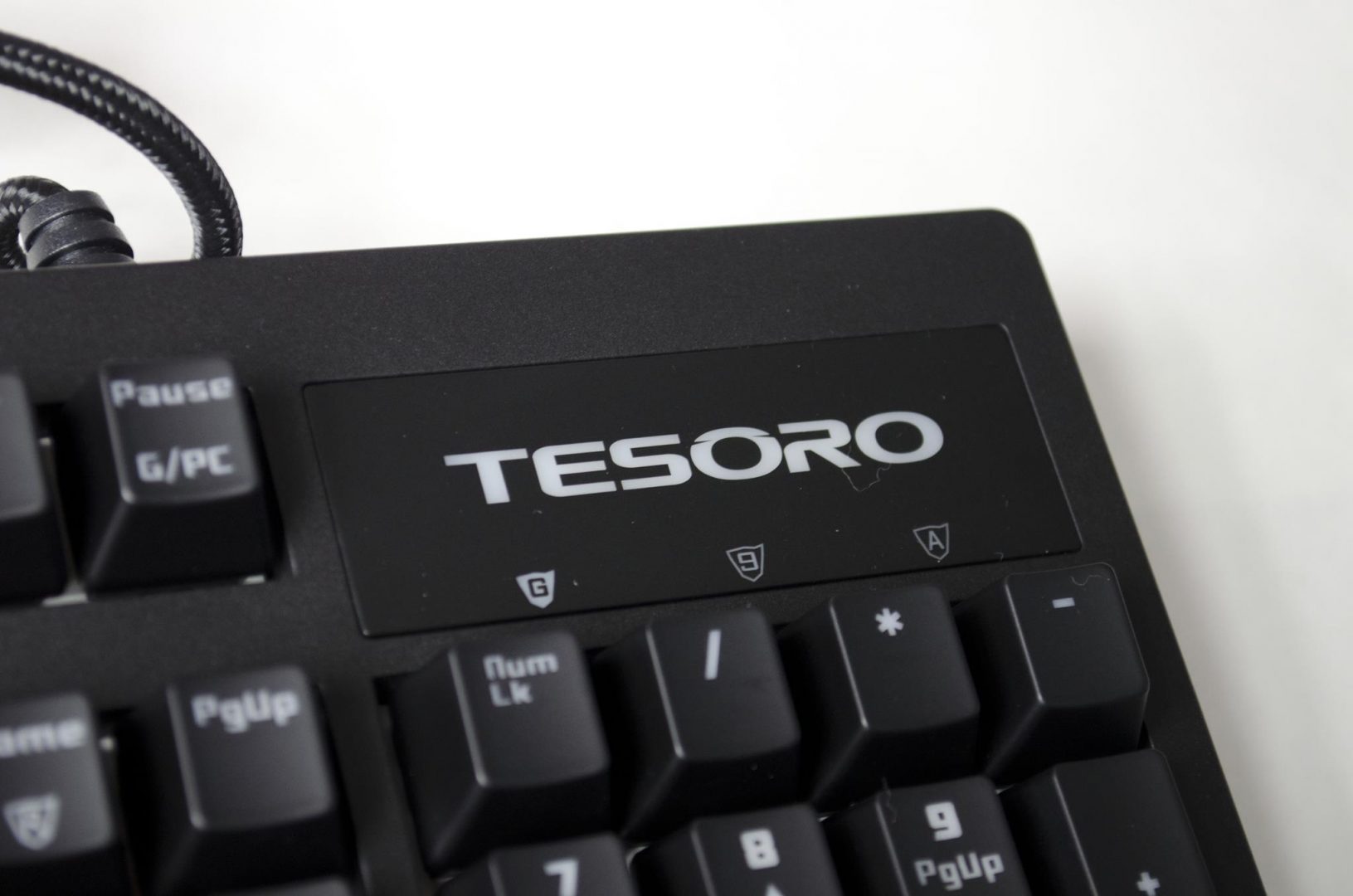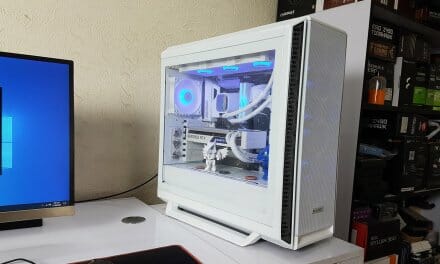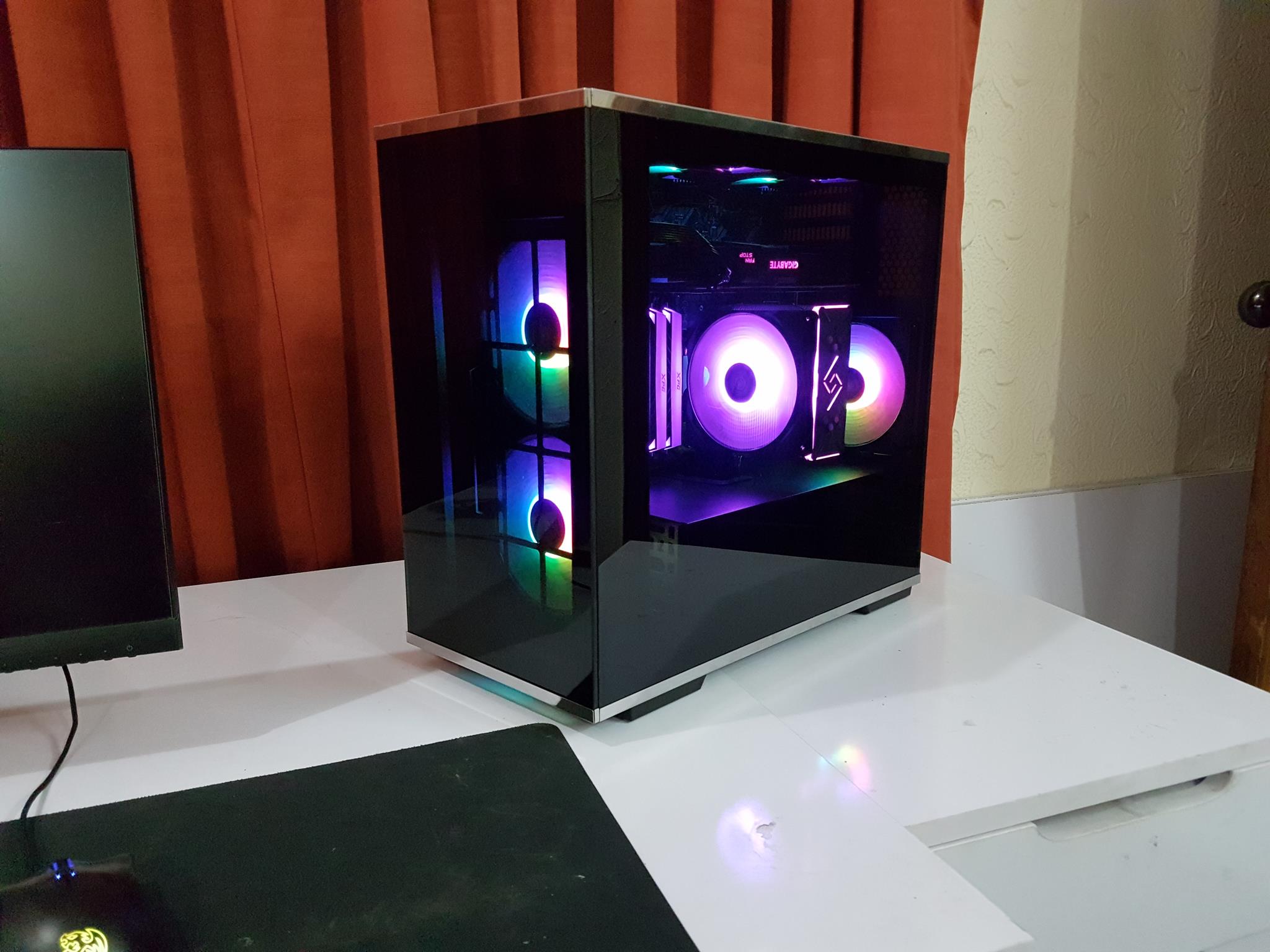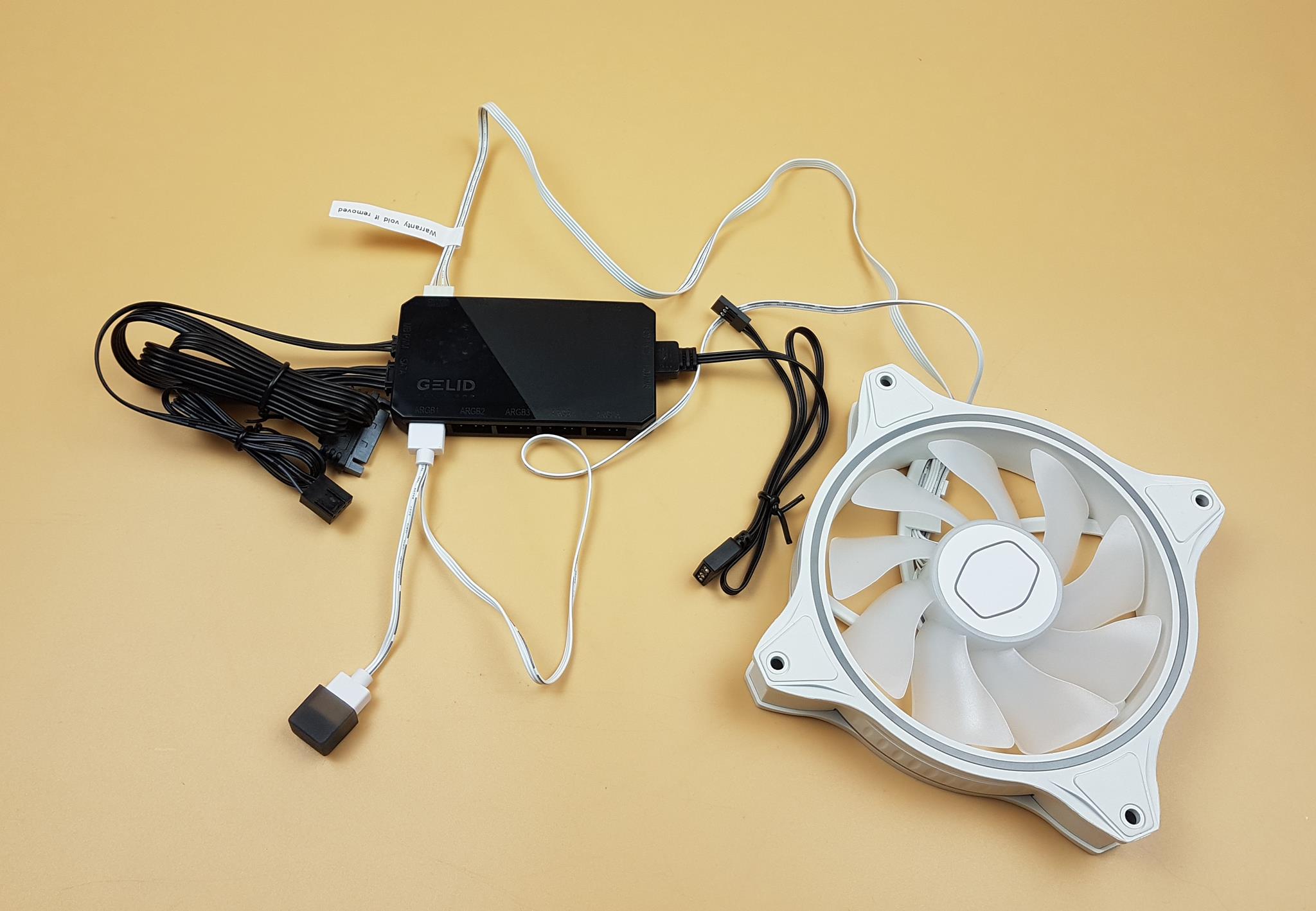
GL.INET SLATE 7 (GL-BE3600) WIFI 7 TRAVEL ROUTER REVIEW – THE ALMIGHTY TRAVEL ROUTER, PERFECT FOR ON THE GO SECURITY
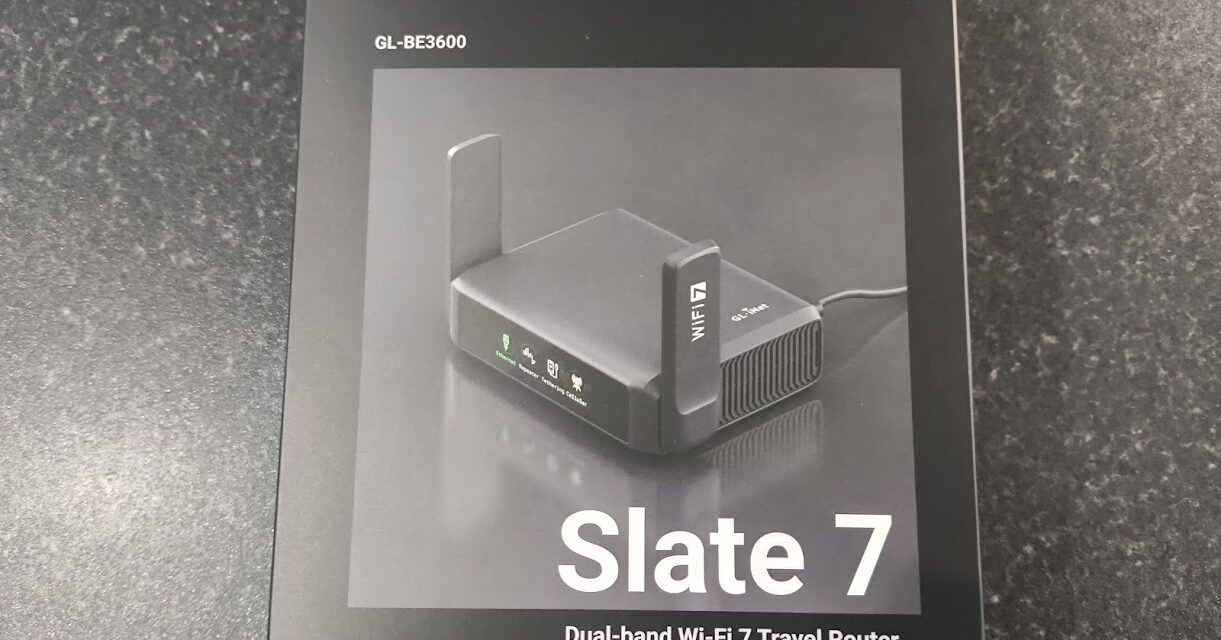
ENOSTECH VERDICT
The GL.iNet Slate 7 is the latest travel router offering, which packs all the features you know and love, now with Wifi 7 and touchscreen abilities. This next generation of travel router features open source firmware (based on OpenWRT), VPN server and client capabilities (including OpenVPN, WireGuard and Tor support), multiple WAN options (including Ethernet, Tethering, LTE modem and wireless repeater/extender modes).
There isn’t much that this little powerhouse can’t do. If you’re often finding yourself reliant on public WiFi for work, then the privacy options offered by the GL iNet Slate 7 makes for the perfect travel accessory. Travel routers like the Slate 7 can be used to extend upon the restrictions usually placed by free/public WiFi providers. The Slate 7 also features 2x 2.5GbE ports, making it perfect for use regardless of whether you are at home or on the go. It’s the future-proof router you didn’t even realise you needed.
Pros:
- Feature rich
- Portable
- Supports WiFi 7
- Not one but two 2.5GbE ports (WAN+LAN)
- Easy to use
- USB 3.0 Port
- 8-watt average power consumption
- Based on OpenWRT snapshot 23.05
Cons:
- Could be considered expensive
- Lack of 6GHz support

SLATE 7 MANUFACTURER’S VIDEO
PRICING
The Slate 7 is currently available for general pre-order for $120. This does put it at the more expensive end of the spectrum. If you need a cheaper alternative. The previous generation Beryl AX still holds up well.
SPECIFICATION
| Interface | 1 x WAN Ethernet port 1 x LAN Ethernet port 1 x USB 3.0 port 1 x Type-C Power port 1 x Reset button 1 x Toggle button |
| CPU | Qualcomm Quad-core, @1.1GHz |
| Memory / Storage | DDR4 1GB / NAND Flash 512MB |
| Protocol | IEEE 802.11a/b/g/n/ac/ax/be |
| Wi-Fi Speed | 688Mbps (2.4GHz), 2882Mbps (5GHz) |
| Antennas | 2 x foldable external Wi-Fi antennas |
| Ethernet Speed | 10/100/1000/2500Mbps |
| Power Input | Type-C, 5V/3A, 9V/3A, 12V/2.5A |
| Power Consumption | <18W (without USB) |
| Operating Temperature | 0 ~ 40°C (32 ~ 104°F) |
| Storage Temperature | -20 ~ 70°C (-4 ~ 158°F) |
| Dimension / Weight | 130 x 91 x 34mm / 295g |
A CLOSER LOOK
Taking a look at the front of the packaging, GL.iNet have gone for a sleek, clean yet professional look on this one. You can see a representation of what the router looks like and a brief mention to its model number with the GL.iNet logo in the top right-hand corner.
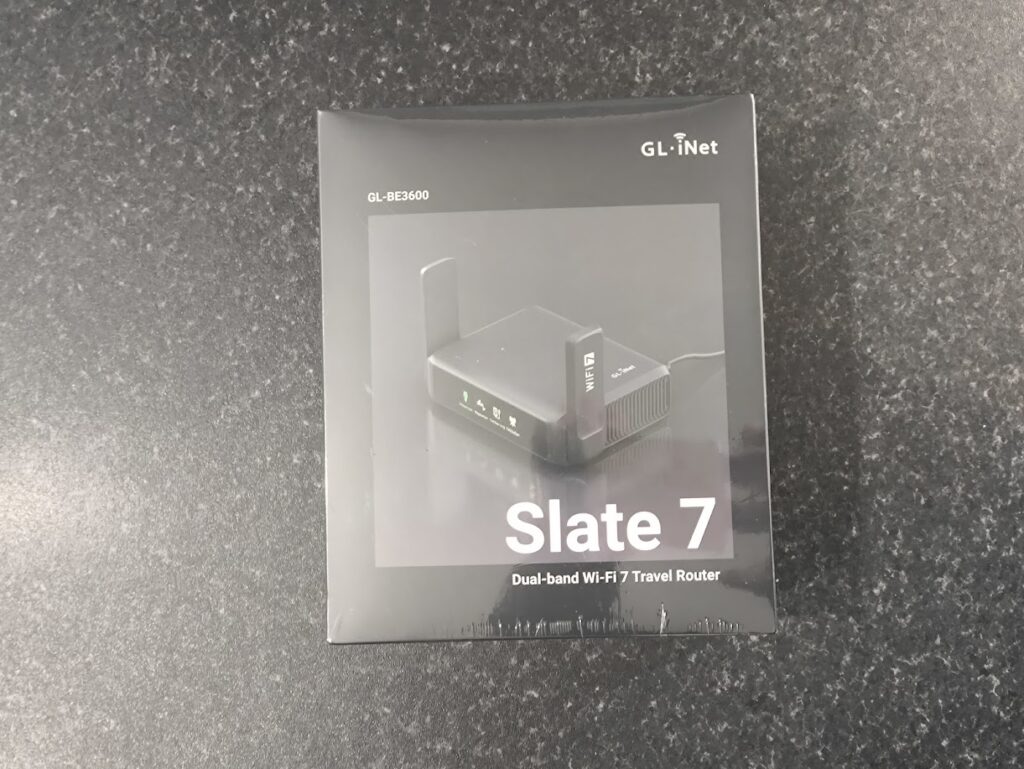
Looking inside the box, you can see different plug adapters for various countries, a quick start guide and a QR Code which takes you to the GL.iNet community pages where you can learn more, apply to be a beta tester, and so much more.
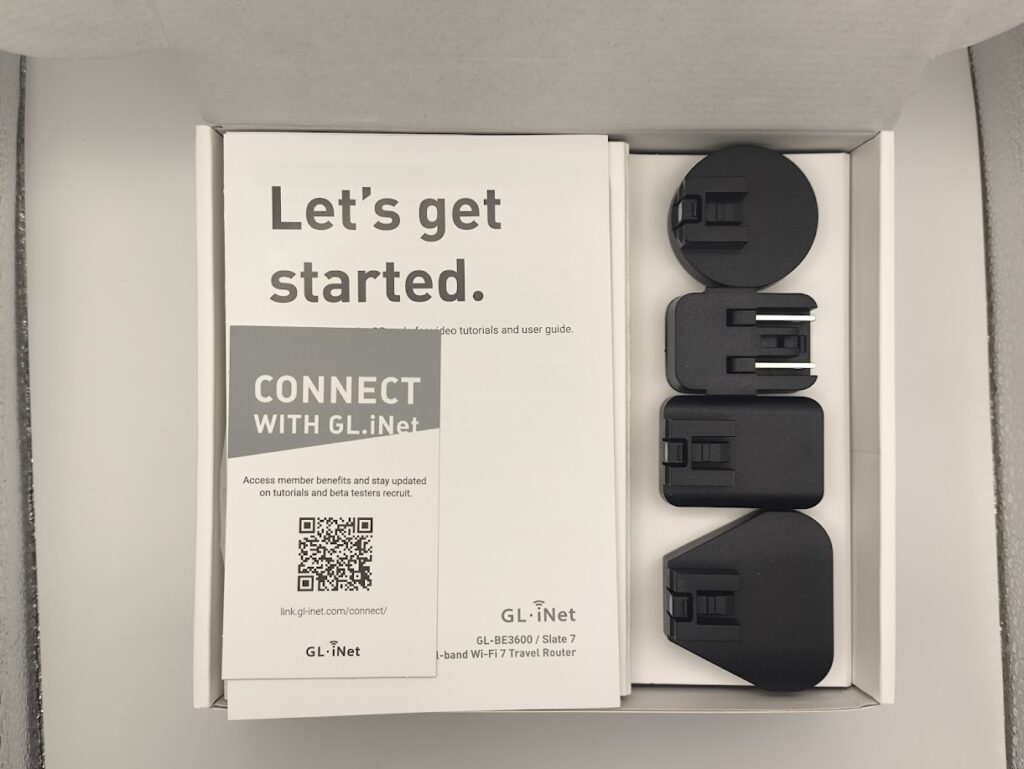
Unboxing the router, you can see just how stylish it looks in that all Black finish. It’s extremely presentable and will blend in nicely to any environment. We’ve uploaded a video for you to see for yourself.
The Slate 7 is slightly larger, but not by much. However, the Slate 7 weighs more at 295g (compared to the Beryl’s weight of 196g). So it will be a bit more noticeable in a rucksack, or if you are carrying it around in your pocket.

Looking at the front of the router, you can see the touchscreen, We’ll cover this more later on. I have a sneaky suspicion that this is one of the reasons why this travel router is slightly more expensive than its predecessors. But GL.iNet likes to be innovative, and the Slate 7 is not shy of being the new kid on the block.

Looking at the rear of the router, you can see the USB-C power port, 1x WAN Port and 1x LAN port (both ports can be customized or switched around should you need to) and the important thing to add is that both are 2.5GbE ports. So like us, if you’re lucky to have a fast fibre connection, you can make the most of it here. Most other travel routers normally only have one 2.5GbE port if you’re lucky, but here we have been spoilt for choice. I like how the WAN port is colour coded too. You can also see a USB 3.0 port, which can be used for a whole different load of scenarios, including tethering, file/printer sharing, cellular backup, and so much more.
I like the fact that it is powered via USB-C, which means that you could theoretically power this all day from a large rechargeable power bank rather than carry the plug around. With an average of 8W power consumption, you really can take this anywhere and not have to worry about being tied down to an electrical outlet.
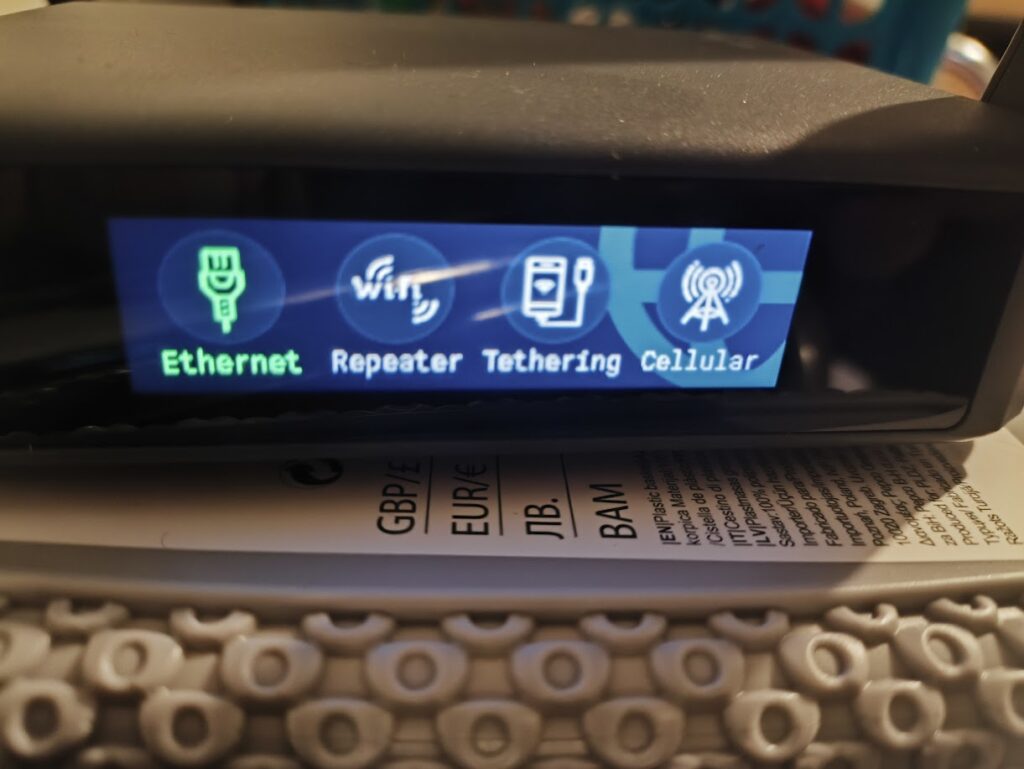
Just a brief look at the touchscreen. It’s actually quite useful, you can see exactly what the router is doing at any given moment, which connectivity mode you are using, etc. Ethernet mode is the standard or the default mode (where you have WAN and LAN active).
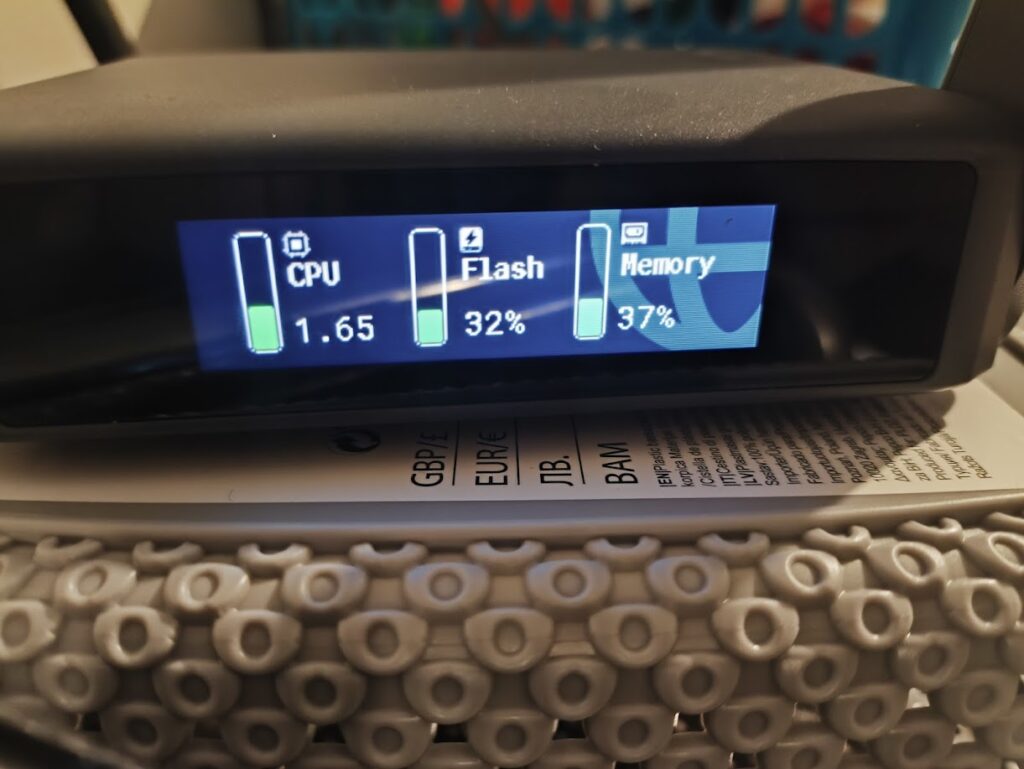
Swiping to the right even allows you to view some live stats. In this example, you can see the status of the CPU, storage and RAM. So if you’re a bit of a stat, performance nerd like me, then you always know at any given moment how the router is performing.

Swiping around a bit more and you can even see the status of things like VPN connectivity and how many ads have been blocked by AdGuard Home, and you have the ability to disable it without delving into the web interface.
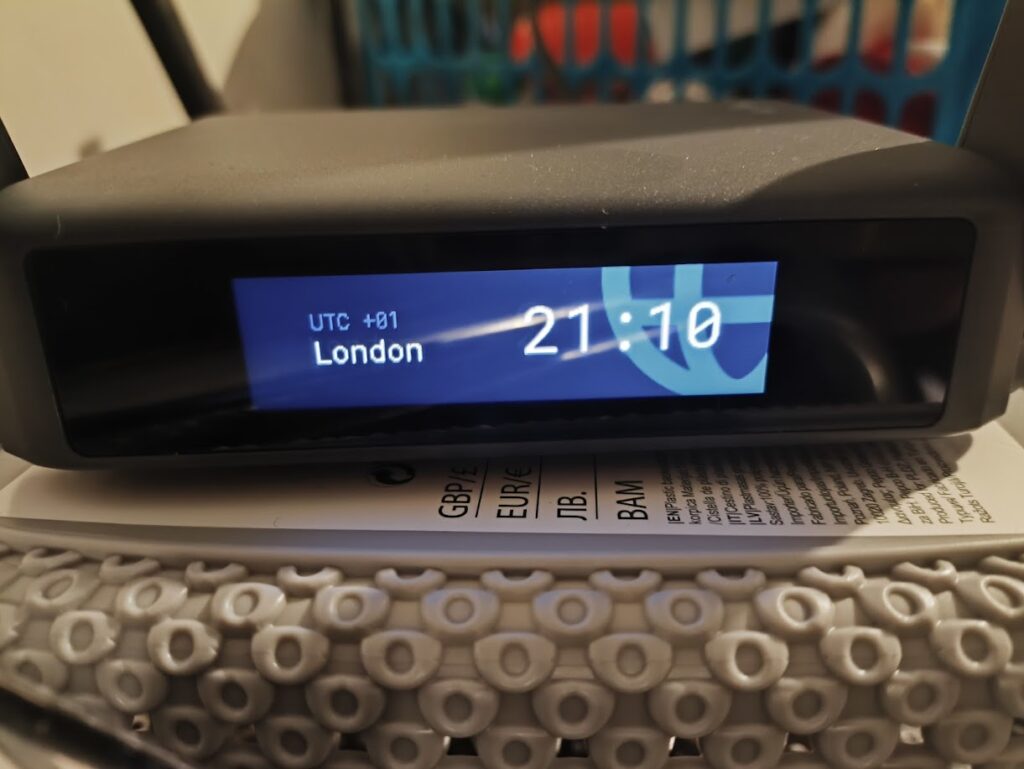
Oh look, there’s even a clock and timezone too. I think having the date rather than the time zone would be better, but that’s just my personal preference.
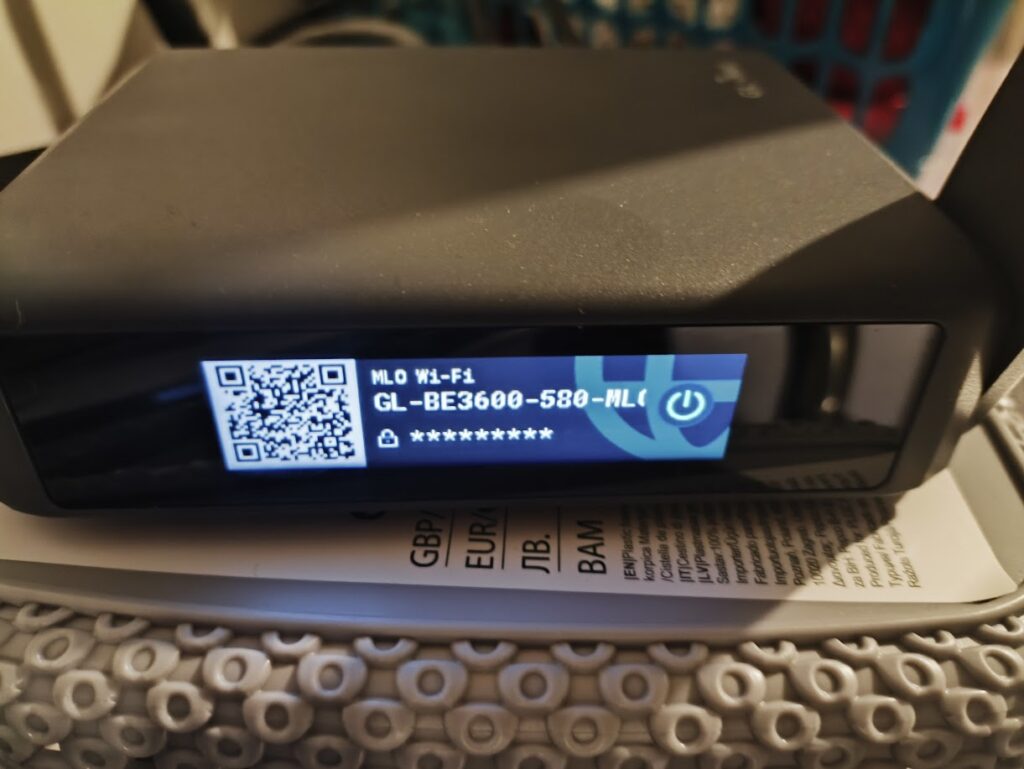
This bit, I’m not sure whether I like it or not. You can turn off the various SSIDs and connect using the QR Code. What happens if you walk away from it for a few minutes? Anybody could walk up and play around, or connect to the router. Granted, there are ways of locking these travel routers down generally. But that needs a bit more technical know-how, and I don’t know how I feel about it. I mean, I get it, but still, in this security-driven world we live in, it feels almost too inviting.
PERFORMANCE
Now I like to see just how these little routers perform under a little pressure. First of all, we did a wired speed test on a 900Mb symmetrical fibre to the premises connection. The Slate 7 didn’t even break a sweat. That’s a 10/10 score for our connection. This is helped by the inclusion of those 2x 2.5GbE ports and the powerful Qualcomm quad-core processor.
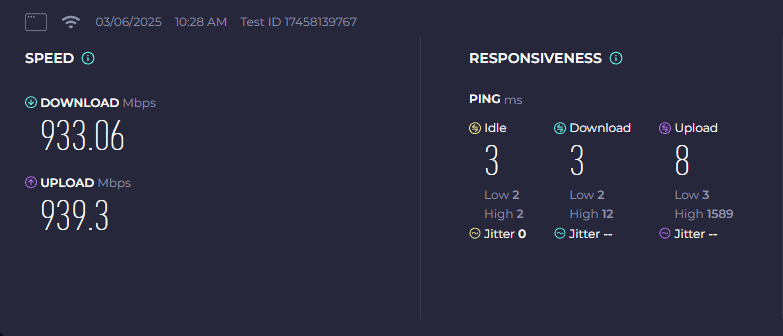
I then did several speed tests from a Poco X6 Pro 5G smartphone, and it almost got full marks. Slightly lower on the download side this time but it almost nailed it.

To get another perspective, I then tested a WiFi 7 compatible dongle using a Realtek 8912AU chipset. Just to make it a series of fair tests, and again it came very close to the results from my mobile phone. Not quite getting a perfect 10/10 but considering these are some of the best WiFi speedtest results I’ve had in my house, it’s still very impressive.

Now, my fibre connection at home is set up a little bit in reverse. What do I mean by this? Well, the fibre terminates upstairs, and this is where the router is placed. Normally, you’d have the router downstairs and start measuring from downstairs to upstairs, further away. But I’m the other way around. So just for giggles, I did a test downstairs too. So in context, I’m now pretty much sitting underneath the router.

That’s still a more than respectable result considering the signal has to penetrate down through the ceiling and to my phone in the living room area. It just goes to show just what a workhorse the Slate 7 is. It gives me a better result than the existing TP-Link AX55, which would ordinarily be set up in the same way in this house. Using that system, I’d be lucky to average around 350Mbps from downstairs.
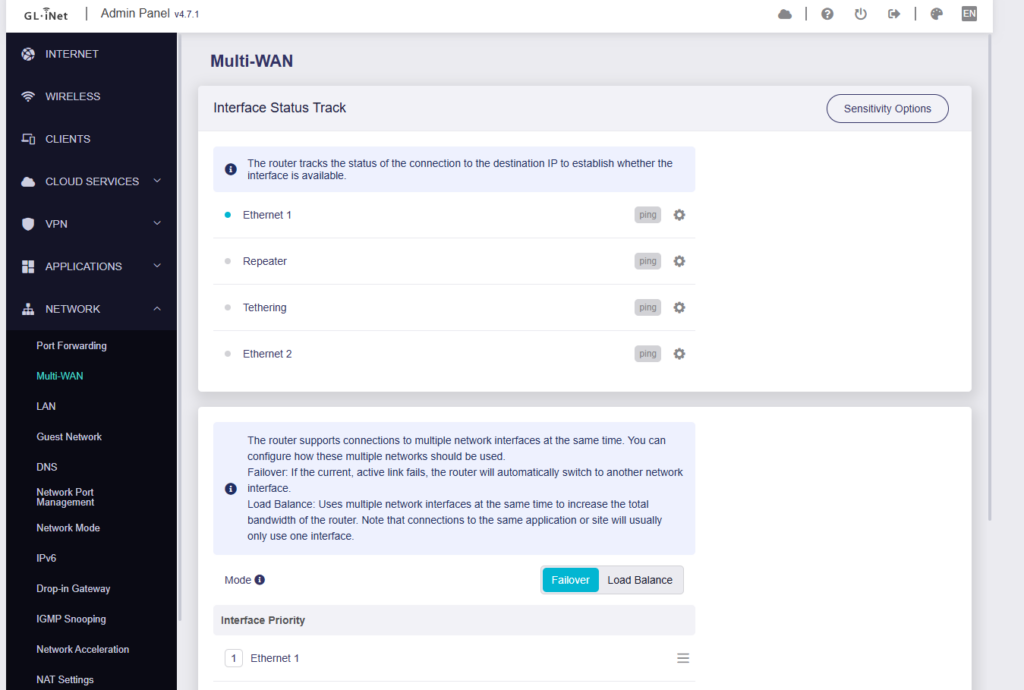
Logging into the web interface to show you a few of the almost endless possibilities of this router is the fact that it supports Multi-WAN connectivity. This means you can set up various failsafe options. So, say you have a standard internet connection AND a failsafe cellular modem plugged in. You can use the web interface to either load balance the connection, or for it to fail over automatically to the cellular modem should your primary connection go down. With OpenWRT, it can be a bit daunting to learn if you’re not familiar with how it works, but GL.iNet’s implementation makes it so easy.
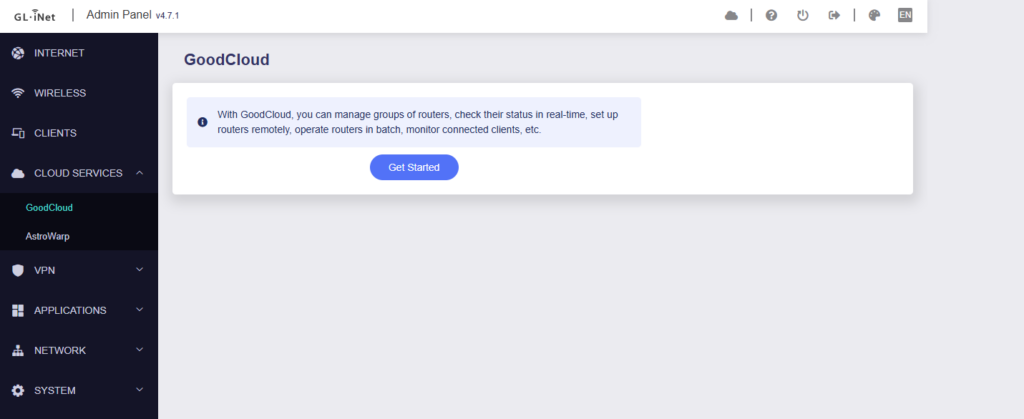
Another cool feature is the inclusion of GoodCloud support. Imagine you have a team of engineers, each equipped with a travel router. GoodCloud is a device management platform which allows you to configure and monitor multiple routers at any given time. It makes life easier for the IT staff in the background.
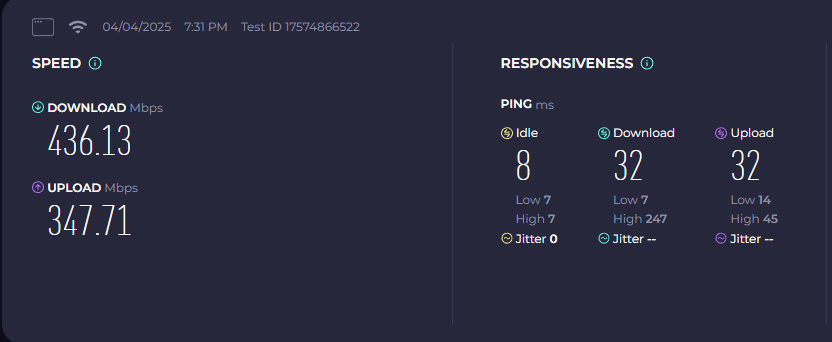
Now let us talk about WireGuard VPN support. This router supports both WireGuard Client and Server modes and is rated for a maximum speed of up to 540Mbps. As a test, I connected up in client mode to Surfshark in London and performed multiple tests. I was able to get 420- 436Mbps on average. Not far off the bold claims of up to 540Mbps. Something to bear in mind, you don’t know the loads on the Surfshark servers, so it might be possible to get closer to the 540Mbps depending on the time of day, etc.
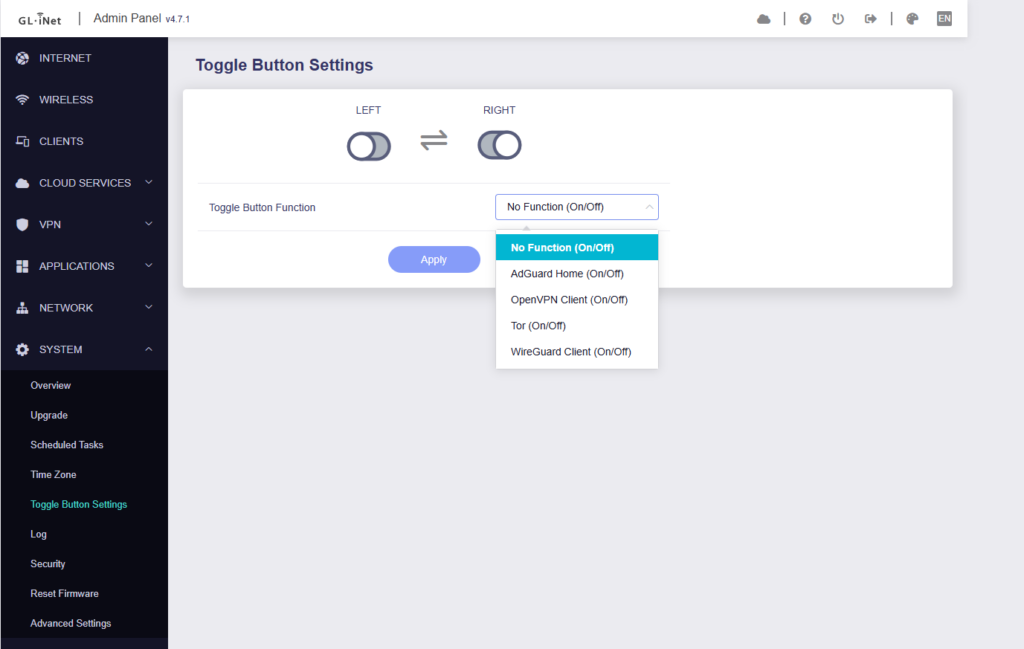
Another cool feature, and we have seen it before, is the button on the side of the router, you can tailor this to turn on or off the various VPN services that this router supports, as well as turning on or off the AdGuard Home ad blocker. So it means this router becomes almost plug-and-play. Is it a new feature? No, but it means less tinkering around in the web interface and more time to get on with those mission-critical tasks.
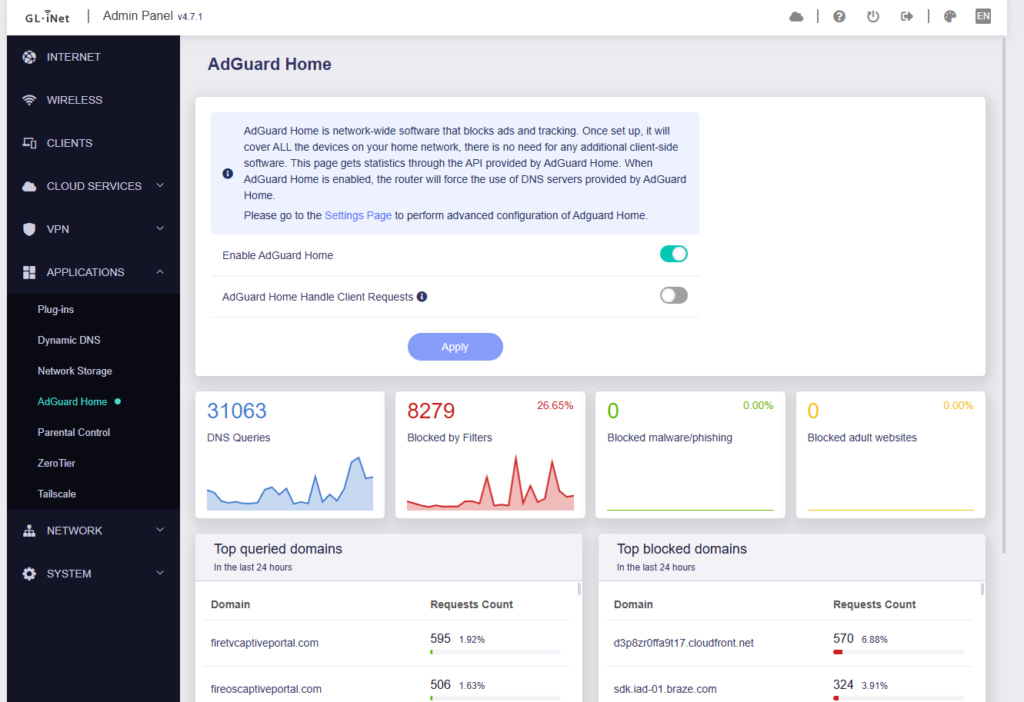
Talking of AdGuard Home, this is another feature which we’ve seen before, but are grateful to see again. It is a network Ad Blocker that you can use to block ads, malware, trackers, you name it. You can also use it for a basic level of adult content filtering, too. For something that’s completely free, it’s totally worth spending a few minutes setting up. It means you don’t need another device like a Raspberry Pi to accomplish this. As you can see, it has blocked almost 30% of my network traffic across all devices in the background. Now, whilst it won’t block or circumvent absolutely everything, it’s another piece of mind software that you can set and forget. Running it at a router level increases performance and accuracy. This router has more than enough performance to handle it gracefully. We are pleased to see the Slate 7 continue to offer it.
6GHz – Where are you?
Unfortunately, the Slate 7 does not support the 6 GHz frequency spectrum, which is slightly disappointing. However, this may not be entirely GL.iNet’s fault. 6GHz is a bit of a sore subject in the world of WiFi. There are still many countries which have regulatory restrictions on the use of 6GHz and certification can be a tricky subject.
Also, 6GHz has a shorter range than the likes of 2.4 and 5GHz, so it isn’t always effective to use. Devices using 6 GHz also must support WPA3 security protocols, which, even in this day and age, there are a lot of budget-friendly devices out there that still do not support the use of WPA3. Think of your older IoT devices like smart bulbs, locks, some Alexa devices, etc. A lot of these have been very slow on the uptake of WPA3. So there’s a lot to work on before 6GHz becomes mainstream. There are routers out there that support 6GHz already, but it’s going to take time before it’s fully mainstream. I think in this case, it would push the price up of this travel router even further, which would be less than ideal. So I can see why we don’t have 6GHz support….. YET. I have a feeling it will come to GL.iNet products, we just need to wait a little longer.
Final Words
So, the Slate 7 is the new kid on the block and packs more features than you can shake a stick at. It’s definitely going to be at the forefront of my travel shenanigans. It’s nice to see it with OpenWRT V23 support from the word go. GL.iNet is generally pretty good at getting their routers on later versions of OpenWRT, even if it takes a bit of time. There are a lot of factors that can affect which devices support what version of the OpenWRT firmware. I’m interested to see in what direction the router takes once it matures a little more.
With its 1GB of storage and 512MB of RAM, there isn’t much that you can’t do with this router. Is the screen necessary? Or is it more of a gimmick? Time will tell on that one. I could see it being useful in some scenarios, but also a security risk in other ways.
Now I ran this as my main router for a while, and although you can use a travel router as a home/office router replacement, I wouldn’t recommend it long term. Travel routers are designed to be precisely that, travel routers that go with you and this is where the Slate 7 will shine. If you are after a powerful router for home or the office, then why not consider the GL.iNet Slate 2? Otherwise, you can pre-order the Slate 7 here. It’s certainly found a place in my rucksack.
It’s still early days for WiFi 7, but we’ve rightfully given the Slate 7 our EnosTech Must Have award. I’m excited to see how WiFi 7 will develop across the GL.iNet portfolio of products. We already know that the Flint 3 is coming soon, so clearly it’s full steam ahead for GL.iNet and OpenWRT.










